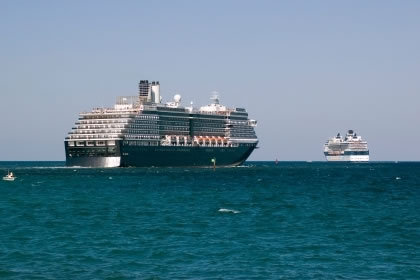History of Argentina
The indigenous cultures of Argentina were mainly hunter-gatherer societies. Until Spanish Europeans arrived in the early 1500’s Argentina was sparsely populated under the Incan empire.
With the arrival of Europeans, a port on the Rio de la Plata was constructed which gave way to the city of Buenos Aires. Leather goods, metals and other resources were easily accessible by the Spanish and turned this port into one of the most important on the Atlantic coast.
Argentina claimed its independence on July 9, 1816 with the help of General San Martin. Many of its neighboring countries claimed their independence during the same time and Argentina was officially recognized as independent from the United Kingdom in 1825. During this period Argentina was mostly made up of Spanish immigrants and gauchos, a culture still honored today as a trademark of this time. Argentina was mostly an economy based on rural resources with an agricultural potential that had yet to be tapped. By the late 1800’s and early 1900’s the emergence of agricultural technology along with Argentina’s export of meat, grew the economy into a world presence. With the crash of 1929 Argentina focused its economic sights on industrial growth and Argentina gained economic independence as a result. This mostly benefited the rich however, and poor immigrants continued to flow into Buenos Aires looking for work. Consequently, the growing population was increasing faster than Buenos Aires could structure its growth and class divisions increased.
Juan Domingo Peron came into power in 1946 and developed programs to benefit this working class. While jobs increased and working conditions improved, Peron was criticized as ruling with an aggressive political campaign bordering on fascist and was accused of abusing presidential powers. His wife, Evita is more popularly considered the historical trademark of the Perons and was widely revered for her work in women’s rights and charity. Between the years of 1952 and 1974 Argentina saw an economic rollercoaster as a result of WWII and changing world economics. The death of Evita added to the instability of Peron’s power and he retreated to Spain only to return again and gain the presidency from Hector Campora. Peron died not long after in 1974 bringing Argentina back into military rule.
In spring of 1974 a military coup lead by General Jorge Videla took control of the Argentine government marking the beginning of The Dirty War, a period of rule discernible by brutality and terror. Most commonly known for the disappearance of leftist thinkers and political activists it is estimated that around 30,000 people were killed, kidnapped or tortured during the time. The governing body didn’t differentiate between true political terrorists and people who simply disagreed with the nature of the government’s rule and it became common for people who didn’t support the government to disappear in the middle of the night, or never return home from an outing. The Dirty War ended when in an attempt to bolster a crashing economy Videla invaded the Falkland Islands to push the British out. When his inexperienced army met the British in real battle, they surrendered after 74 days and the presidency was handed to Raul Alfonsin marking the end of The Dirty War in 1983. Still reeling from the dark hours of this war, The Mothers are a group of women who protest the president’s house to this day demanding the whereabouts of the many men and women of whom are their missing sons and daughters. This is a strong reminder of Argentina’s past and justice is still being served over the tragedies that occurred during the war.
Despite Alfonsin’s best democratic efforts, he couldn’t pull Argentina out of economic turmoil.
Carlos Menem became president from 1989 to 1999 and resolved the problem, albeit temporarily. Claiming the peso’s value on par with that of the dollar Menem brought a period of brief prosperity to Argentina. While the brief prosperity was enjoyed, Argentine goods became undervalued on the world market and people began losing jobs. With no confidence in the government or the economy, Argentina struggled to find a solution through several presidents. In 2002, president Eduardo Duhalde devalued the peso leaving it at 3:1 with the dollar and leaving Argentina with much recovering to do. Since, Argentina has seen growth and despite its rocky history, the country is prospering.
